-
Posts
4,741 -
Joined
-
Last visited
-
Days Won
119
Content Type
Profiles
Forums
Resource Library
Events
Gallery
Blogs
Store
Community Map
Posts posted by Mayner
-
-
16 hours ago, Tullygrainey said:
More evidence of intense activity! John, what's that tool at the front right that looks like a black soup spoon with a wooden handle?
Quite the reverse to intense activity, with very little time available for modelling, I had done hardly anything in the workshop since before Christmas
The black spoon is a Casting Ladle. I had recently cast woods metal weights for the 650.
I need to clear the clutter from the workbench before I complete the loco.
-
 1
1
-
-
All sold now except one Orphan Brake Van that's gone to the Island of Misfit Toys (my personal collection)
One 4w Hooded Van Kit remaining for those who enjoy the challenge of model making.
https://jmdesignmodelrailways.com/collections/irish-rolling-stock-kits
-
 2
2
-
 1
1
-
-
Mixture of the Good, the Not so Good and plain Ugly wagons.
Achieving consistent result with 3D resin printing can be challenging some prints that did not meet the expected standard but not bad enough to discard.
Seconds are marketed as seconds and nature of defect summarised.
-
 1
1
-
 1
1
-
-
Great to see Ahern's Miniature Locomotive Construction used as a reference over 70 years after it was first published.
I use Athern's bogie design in my 4mm GSWR 52 Class kit which is capable of running through Peco small radius points!

Although I was once almost religious about tidiness these days my workbench is a bit of a mess, snatching time for modelling whenever I can between other tasks.
There is a part assembled MGWR 2-4-0 in there somewhere last worked on a worked on a week or so ago but have not had the time to tidy uo.
-
 1
1
-
 1
1
-
-
On 23/2/2024 at 12:56 PM, jhb171achill said:
I have to say I don't mind ICRs.... they're less noisy than 29s or 26s, though I agree with them being airless, which always leads to the toilets being less than pleasant. We can't blame the ICR itself for the lack of catering....
In terms of comfort, the AECs back in the day (before the survivors got plastic seats) were by FAR the most comfortable railcrs ever to run here - but they were noisy too - like a 29 full of marbles in an echo chamber, going down a tin staircase......
AEC railcar seats in the 1950s, with yours truly in it, on the Harkitstreet Line...........
Maybe its that I am getting older but I have gone from a strongly pro-rail to a sceptic stance during the past 20 odd years.
Back in the day the AEC railcars were introduced both CIE and the GNR were expected to at least make an operating profit and fund their capital investment.
In the heyday of 4-4-0s and 6 wheel coaches the GSWR and GSR shareholders expected to receive a dividend on their share holdings.
In 2002 IE received a €166.3m Operating Subsidy and €241m in Capital Grants, while the Government literally pay Season Ticket holders to travel by rail in the form of tax breaks, while the ordinary tax payer pays who largely self fund their own travel through the nose in the form of Excise Duty on Fuel, VRT on new vehicles, Road Tax and fees on Toll Roads.
In these changing times its difficult to see justification for further investment in improving rail or road links to city centres which may empty out as a result of de-centralisation and remote working.
Over twenty years ago in the days before fibre myself and others successfully worked remotely (from our homes) for an Irish Government agency using dial up internet visiting Head Office in Dublin for weekly/fortnightly meetings, our Regional Offices communicating with Head Office by teleconference. Other agencies were successfully de-centralised to the Regions even to Cahirciveen, until the policy was reversed and re-centralised contributing to increasing congestion and overcrowding in our cities which fueled the Irish Property Bubble and financial collapse through inflated property prices as a result of developers competing for land.
Ironically I found myself mired in bureaucracy unbelievable by Irish standards when I joined the NZ public sector in 2008 despite several re-organisations the level of bureaucracy continued to increase until I jumped ship 10 years later.
-
 1
1
-
 1
1
-
-
Blog featuring graphics and photos of our latest version of the 20T Good Brake.
Due to very low levels of demand for our existing models we are accepting "Expressions of Interest" to assess whether its worth while to proceed to production with this particular model. At this stage we are looking at Expressions of Interest in a minimum of 50 wagons (Brake Vans, Opens, Vans) to proceed to production.
I have not set up an Expression of Interest/Prepayment function on the Shopify site because of very low sales turnover and relatively high running costs of pre-payment apps.
We expect to sell the updated version of the Brake Van at a similar price point to the existing versions.
Please e-mail me on info@jmdesignmr.co.nz or PM on this group if you would like to place an expression of interest or have any questions.
Blog featuring graphics and photos of our latest 'modernised" version of the 20T Good Brake with all metal duckets/lookouts
JHB the Graphic Samples are for illustrative purposes only (so prospective customers can see the detail), the Brown will be brown, the Yellow yellow and Black black and roof a secret blend perfected by my paint supplier

All planked version based on 23642 "the Cultra Van" with 'in service" graphics/decals.
Sheeted ply cabin version with vertical planked verandas 23508
Test print of the ply cabin version by our former Singapore supplier graphics are a mock up to be finalised if we proceed to production
-
 8
8
-
 1
1
-
-
7 hours ago, Bóithre Iarainn said:
Many thanks for all of this Mayner! What was the logic behind the 15:40 Sunday only Ballina-Connolly? Also do you know if the Asahi liner ran via Mullingar until the factory closed in 1997? Or was it redirected before that?
The 15:40 SO Ballina-Connolly would have been intended to return people who spent the weekend in the West (workers and 3rd level students) to Dublin this was the return working of a FO Heuston-Ballina working. The train was likely to be worked by coaches normally used on a Dublin outer suburban service, probably simpler for the train to return to Connolly via Mullingar for cleaning and servicing, than a Heuston busy with evening arrivals and a need to back out to Island Bridge Junction to run to Connolly via the Phoenix Park Tunnel.
The Asahi Liner was diverted to run via Tullamore and the 4w flats used to transport Acrylonitrile and other hazardous chemicals replaced by bogie wagons to increase the permitted speed of the train from 35 to 50mph. The max line speed of 4w container flats was reduced from 50 to 35mph following a series of derailments of Liner Trains with 4w wagons on the Midland during the late 70s-early 80s.
The Up Ashai then using 4w chemical flats de-railed approaching Tullamore in Jan 96 https://www.irishtimes.com/news/reason-why-chemical-train-derailed-still-not-known-1.19863
The Mullingar-Athlone line was out of use and weed grown in place while I was working-living in Athlone during the Summer-Autumn of 96, although the ballast and sleepers appeared in good condition the rails 90lb/Yd from the 1920s were worn "burred over" requiring replacement if the line was to continue in operation..
-
 4
4
-
 1
1
-
-
Probably best to e-mail Des at dezsullivan@gmail.com if you are unable to connect to the SSM site.
A HTTP 404 error code has come up for several weeks.
My anti-virus would not let me connect 'expired certificate" when I tried Galteemore's link and the error code appeared when I overrode the antivirus.
But managed to connect when I ran a separate search!
Like the old Provincial Wagons Web Site its probably not worthwhile for SSM to renew their cert/update the site because of high hosting costs and low level of demand for kits.
-
 1
1
-
-
22 hours ago, Horsetan said:
Interestingly, having looked at all the photos so far, it does look to me like there's a slight variation in the depth of the wheel flanges amongst some of the models.
There are variations in wheel profile between different manufacturers of so called EMF profile wheels, which may affect flange depth.
There was variance in thread width between earlier and later batches of Sharman B profile wheels.
The EMF Standard specifies: P4 Standard secified
F T (effective thickness) 25-thou/0.65mm FT (Effective) 0.35-0.40mm
Flange depth varies.
TW (tyre width) 90-thou-2.28 TW 1.85-2.00mm
Standard info from Tables 1 and 2 "An Approach to Building FINESCALE TRACK in 4mm Iain Rice 1991
Specifying a max-min makes more sense from a manufacturing perspective than specifying an absolute.
Sharman
Actual TW TMD Midland Tank Sharman B Profile 1984-5 2.25-2.29 mm
SSM SG2 Sharman B Profile 2002-3 2.14- 2.17mm
TMD J15 Sharman B Profile 1994-5 2.16-2.19mm
SSM S Gibson EMF Profile 2002-3 2.27mm
Coach wheel Ultrascale EMF 2.23-2.27
I measured TWs using a calipers with a digital read out:
The Sharman B profile wheels were set with a B-B of 19.5 using a TMD B-B gauge same B-B ran without problems on the MRSI Loughrea laid to EMF Standards on which group members used a combination of Ultrascale and Jackson (wagon and coach) wheels set with a B-B of 19.3.
A 19.5mm B-B was used on locos and stock built by Tim Cramer featured in a Railway Modeller article in the early 70s, locos built by Tim included a Bandon Tank, GSWR 90, a Midland Tank and a J15 Chassis.
I now set the B-B on locos fitted with Gibson or Ultrascale wheels to 19.3 which is consistent when using EMF profile wheels and running clearances.
Dave:
Is Brian who built the majority of the locos and stock that ran on the Loughrea Layout still with us or able to advise? Frank who was the guiding light in terms of trackwork passed away several years ago. I got involved when I returned for the UK in the mid 90s after most of the hard work was done

Restoring the layout would be a great way of acknowledging the effort of the team that came up with the idea, built and worked on the layout all those years ago.
-
 1
1
-
-
Not quite a silk purse out of a sows ear 211s assemble using a Q Kits B201 and Athearn F7 Chassis. Still one of my most prized possessions bought second hand from the Belfast Caboose 20 over 20 odd years ago. It ended up a choice between a MIR 071 assembled to a similar level of detail and weathering. Ended up buying 211s which was more suitable for use on the MRSI Loughrea layout and I didn't have the money to buy the two locos at the time.
Although the B201 Class ended up mainly on Dublin Suburban services the Maybach and GM re-built locos were also held down mainline passenger and freight duties into the early 70s.
B233 & 234 the Maybach rebuilds carried out in the mid-60 were regular performers on Dublin-Limerick via Nenagh passenger services and Bulk Cement trains from Castlemunget to the silos at Cabra and the Athy Asbestos factor. The Maybachs were fitted and did work in multiple with the B141s
The Maybach' rebuilds were a distinct variation of the C Class with one porthole window blanked out apparently introduced in the black with white eyebrow and small yellow warning panel livery both were re-painted in the Supertrain scheme but without the GM headlights before re-building with GM engines during 79/80.
The GM rebuilds appear to have been initially rostered on fast main line Passenger Links including Heuston-Tralee and return, Dublin-Cork Newspaper trains and slower heavier duties such as Galway Day Mail and Connoly-Sligo passenger trains.
B201s were used for a short while on Heuston-Cork trains during the 1973 timetable hauling 6-7 coach Supertrain Sets.
The B201 class would have had an advantage over the B141/181 Class on fast passenger trains in terms of higher power and steadier running with their Commonwealth Bogies.
CIE reduced frequency and slowed down trains in response to the 73 oil crisis, running slower and heavier trains hauled by 001 Class or pairs of Bo Bos.
The B201s continued to work goods/freight trains following their transfer to the Dublin area, I once watched a procession of B201 hauled southbound Bulk and Bagged (H Vans) Cement Trains from the lineside near Howth Junction in 1976-77. I was doing a Saturday afternoon surveying job in Baldoyle Industrial Estate and found it difficult to concentrate, happy days!
-
 9
9
-
 1
1
-
-
I have been thinking about building a model of one of the Ballymena Black Hawthorne 0-4-2ST since I read PJ Flannigans C&L Pan paperback in my early teens (late 60s/early 70s) and several years ago did some work on a 3D model.
Possibly some scope for collaboration possibly combining etched scratchbuilders parts and 3D printing.
I would go for a bespoke chassis, besides the very short wheelbase the Hornby 0-6-0St tend to stall on dead frog points and it may be challenging to fit a 'keep alive" decoder to the loco.
I will see if I can did out my 3D model of the Ballymena tank
-
 1
1
-
-
7 hours ago, WRENNEIRE said:
The Midland & GSWR Convertibles are Studio Scale Models and may still be available.
The MGWR Coal Wagons are "Jeremy Suter Irish Kits" One batch produced 20 years ago, the Rolls Royce of whitemetal kits rare by any standards.
-
 1
1
-
-
My Irish 4mm 3' Gauge (OOn3) locos and stock are currently fitted with Kadee HOn3 couplers. The bufferbeam/headstock is notched to allow the coupling pocket/drawgear box to be fixed directly to the underside of the floor at a more prototypical height.
The TT or 4mm version of B&B couplings available from Derek Bunting Derek Bunting, 24 Layston Park, Royston, Herts,SG8 9DS (Derek will reply by e-mail and accept payment by Bank Credit) basically a low cost neater magnetic version of the Continental Hook & Loop/Bemo coupling fitted immediately below the headstock/buffer beam is an other option.

West Clare Open coupling height.
Parkside T&D Ballast wagon as running on the C&L.
-
 6
6
-
-
The Mails (Day and Night), Special Passenger Trains (Knock, GAA, etc), Scheduled long distance goods trains and specials (Livestock to late 75, Fertiliser and Bagged Cement (Post 1977) continued to run over the Mullingar Line after the majority of Galway and Mayo Line passenger trains were diverted to run by Mullingar.
I haven't the WTT for the 70s: The "Day Mails" departed Dun-Laoire Pier for Galway following the arrival of the overnight "Mail Boat" from Hollyhead calling at Connolly at some time between 08:00 and 08:30 arriving Galway Mid-Morning. The Up Day Mail worked by the same train set departed Galway Mid-Afternoon timed to connect with the evening Mail Boat departure to Hollyhead (around 8pm). The Day-Mails were diverted to run to and from Heuston with a bus connection to and from Dunlaoire with the rail connection to Dunlaoire Pier disconnected in connection with the DART Works
The Day Mails tended to be heavy trains of conventional coaching stock potentially loading up to 10 bogies hauled by a OO1 Class Loco.
Galway and Mayo Line Goods Trains were loosed coupled consisting largely of 4w short wheelbase wagons up to the changeover to Liner Train operation in the late 70s. Goods would depart North Wall, and their Provincial Terminals in the evening crossing and possibly changing train crews en-route.
Liner Trains made up of fully braked wagons usually departed North Wall in the early evening working through to their provincial terminal, before departing for Dublin during the early hours of the morning worked by the same rake of wagons and loco.
The Night Mails were made up mainly of bogie vans, postal vehicles and a coach for intending passengers in 1980 scheduled to depart Connolly at 20:00 and Galway at 22:00 crossing at Moate between 23:45 and 23:50 for traffic purposes and presumably a crew change. The Night Mails were scheduled to be worked by 121 Class in the 1980 WTT but tended to be actually worked by a 141 or 181 Class.
The other "Regular" scheduled passenger train over the Mullingar-Athlone Line was the 15:40 Sunday only Ballina-Connolly passenger scheduled to depart Athlone 17:53 arrive in Mullingar 18:41, this train made up of conventional stock scheduled for 001 haulage was hauled by a 141 when I saw the train 5-6 coaches passing Enfield on evening in 84-5.
The Asahi Liner was the only regular Liner Train scheduled to work over the line during the 80s-early 90s. Departing North Wall early evening, usually returning to Dublin Mid morning. Scheduled in 1990 WTT to Depart NW 19:40 Mullingar 21:46 arr Athlone 22:41. Return train scheduled to depart Athlone 09:00 arr Mullingar 09:54.
The Night Mails were diverted to run via Tullamore some time after the opening of the new Athlone Station east of the Shannon and later became a Liner-Mail without passenger accommodation. Between the opening of the new station and diversion of the Night Mail to run via Tullamore a Pilot loco was based at Athlone to assist the Mail in backing movements in and out of the new station (Train topped and tailed by a loco)
Between the mid 90s and the ending of Liner Train operation Galway was served by a Trip working from Galway to Athlone which connected with the North Wall Claremorris Liner at Athlone.
Besides the scheduled passenger and liner trains, there were two outward and one return Shelton-Galway Fertiliser Paths and three outward and two return Dublin-Claremorris Knock Special paths in the 1980 WTT.
The Knock specials tended to be heavy trains, I once saw a 14 coach Knock Special double headed by a pair of 141s passing Mullingar during the Mid-80s. I was returning on a Sligo-Dublin service train following an IRRS visit to Mayo and Sligo (road-Westport-Sligo!) The Sligo Dublin was blocked at Mullingar to allow the Special to enter the section to Killucan and held again at Killucan to allow the Special to clear the long section ahead to Enfield.
I have the 1980s WTT but the 11 page section covering the Mullingar-Athlone line is too cumbersome to post for a handful of trains
-
 2
2
-
-
8 hours ago, Westcorkrailway said:
Don't want to be appearing critical, but it looks like Owens prints are based on the 20' Skeletal Flats introduce in 69/70 the underframe of the 22' Flats is significantly different with the flanges of the Solebar channel turned inwards and the W Irons welded to the outside of the underframe unlike earlier CIE 20T Flats.

I produced a test etch for the 22' Flat about 12 years ago but never got to the production stage

The photo of the model shows the relationship between the solebars and w irons and the way the ISO cuplock support brackets project outwards from the solebars
-
 3
3
-
 4
4
-
-
-
Dad and I had our Mad Max 2 moment on Crane Street on a bank Holiday Monday in 1985. Dad's car (another Mini) had been stolen from outside our house in Drimnagh missing for several weeks when we received call that the Gardai had located it outside the Guinness Brewery. A patrol car lead us to Dad's car before the Guards' high tailed it out of the neighbourhood! It looks like Dad's car was being used as a "Company Car" possibly by residents of the Marrow Bone Lane Flats. Their looks-outs or spotters realised what was happening as we tried to start/tow Dads car, a large gang appeared suddenly appeared out of no-where to stop us taking 'their car."
Managed to attach the tow rope attached and pull out into the middle of the road blocking a guy in a large Volvo that was between us and the approaching mob. The Volvo driver appeared to be mighty pissed to be put at risk but we escaped unscathed. It looks like the 'Company" had parked the car in the streets around the Brewery among other cars for several weeks without detection but ran out of petrol or forgot to move it before the Bank Holiday weekend.
Mini's were popular at the time Dad's 1st Mini was first stolen from the driveway of our house about 3-4 years earlier and found on the Dublin bound lane of the Naas Road at Kill with a broken drive bolt about a week later, I still believe that some one stole it to visit an Inmate in Portlaoise, it turned out to be a struggle to get it home we had stored petrol in lubricating oil cans at work during a petrol shortage following the 2nd Oil Crisis. Unfortunately we did not clean the cans properly and ended up with a carburettor blockage on the way home.
Been through thick and thing during the past 40 years, but nothing could beat my experiences in Dublin during the early 80s
-
 1
1
-
-
5 hours ago, Horsetan said:
My cousin's mental alarm bells went off when he found out I was walking from the flat in Bow Bridge Place, through St. James and into the city centre. I only did that because it was more reliable than waiting for a bus. I could have walked out via Heuston and along the quays as an alternative.
The other thing my cousin told me was never to park my Fiat Punto in Ballyfermot as it was unlikely I'd see it again if I did.
Like many/most Cities and Towns, parts of Dublin's Inner City and surroundings are best avoided unless you like living on the wild side or a bit of excitement.
While Dublin Corporation did an excellent job between the 20s and 60s replacing tenements/poor housing with modern flats and housing. Some of the inner city estates de-generated into slums with many of the residents forced to live by their wits with little or no steady employment with some turning to petty or organised crime.
During the 30s 'newspaper boys' dependant on selling "An Phoblacht" struck and took on the IRA before turning to organised crime and protection the so called "Animal Gang" that apparently survived into the 50s
Like other port cities street pub and street fighting was not exactly unknown in Dublin my Father used to go into town on Saturday Nights in the 30s and 40s to watch men and women fighting in Parnell Street around pub closing time. Besides Festiniog and Welsh Highland Volunteers, Portmadoc was recommended as a good place for a weekend by some skinheads, 'always guaranteed a fight" in a certain pub on a Saturday Night.
Some people literally stole from their neighbours to survive, during the 1969 Maintenance Workers strike my father while on the picket line got to know an old guy from an inner city block who used to bum cigarettes from the strikers and asked him how he survived. "Its like this" said the old guy "if I see a radio or anything I can sell through a open door or window in the flats' "I will grab it put it under my coat and sell it in 10-15minutes on Talbot St.
Dad and I had some fun and games with Inner City urchin kids about 15 years apart, Dad had filled empty paint tins with putty and broken glass and put them on the back seat of car during strike. Some kids walked up and down with picketers while others opened car and stole tins of "paint". Kids never returned to picket line. I was doing maintenance work for Corpo. about 15 years later just before moving to UK, had an old Mini car with an isolation switch on the ignition, kids (10-12) must of pushed the car about 1/4 mile before giving up, no damage done.
Hope the kids both me and my dad saw survived and made a better life for themselves, otherwise their and their childrens' future was likely to be pretty grim.
Yes Dublin is a very interesting town and some areas best avoided.
Marxist Lenist opinion piece over.
I suppose what continues to get me about these complaints about the lack of a National Railway Museum or Heritage Railways is the apparent expectation the the Government or someone else will fund/set up the museum, rather that get involved at grass roots level and follow the example of groups like the RPSI, Transport Museum Society, ITD and individuals like Derailed and groups that did not succeed but at least put in considerable effort and tried.
-
 2
2
-
-
8 hours ago, Mike 84C said:
All I can say is wow! pity NZ is so far away!
Specialist modelling groups in the UK including Scale Four, EM Gauge Societies and NMRA (British Region) (American outline modellers) then to hold convention like "meetings" at both a National and Regional level in the UK.
About 30 years ago I attended an regional Expo EM held in a Holiday Inn style hotel in Scotland which was set up in a similar style to a convention but without Layout Tours. The group had hired a Convention Room carpeted floor, tea and refreshments available, no barriers around layouts, may have held workshops and lectures.
The American and Garden Railway conventions held in NZ tend to be more small scale in nature than the National Convention often organised by one or two people.
The 2011 Hamilton Garden railway convention was organised by a local group of 6 modellers (including myself) held in a Village Hall, with catering and visiting partners events (local tourist attractions and shopping) organised by members partners, while the boys played and talked about trains, test track, lectures and Convention Dinner held in village hall and tours of 5 layouts held over two afternoons. Something like 200 visiting delegates from all over the country, with no clubroom or club layout to maintain held as a social rather than a fund raiser covered its costs.
One American modeller/trader in Auckland organises impromptu mini-conventions at short notices in the Region meeting up (sometimes staying) at his home arranging visits to Clubrooms, Railways Museums and Layout Tours (American, British and Kiwi) across the region, for the cost of a donation to cover fuel and catering.
Something in the Belfast region built around the Modellers Day at the UFTM, visits to Whitehead, model railway club rooms and layout tours in the region would be a good inspiration for a convention.
Don't know about Cork and the Regions, but a Dublin Convention could include visits to the MRSI and SDMRC rooms, Malahide, The National Transport Museum (Motor and PSV) at Howth Castle, layout tours and possibly a behind the scenes visit to Inchacore Works, no shortage of attractions for visiting partners in either city.
-
 2
2
-
-
1 hour ago, Noel said:
Don’t love big shows, miles of tiring walking and bumping into crowds in noise filled halls. Not what I call enjoyable.
The hobby tends to be organised around 2-3 day Conventions rather than exhibitions in the States and this part of the World. Conventions tend to rotate between cities/towns on an annual-bi annual basis usually hosted by the local club/clubs held in a Community Hall or School featuring an exhibition with layouts, traders with the addition of Layout Tours and Workshops/Lectures and a Competition
The Layout Tours where delegates visit home layouts permanent and portable tend to be a major attraction, the Convention Centre effectively clears out when the delegates are "Touring" layouts. The Workshops/Lectures sometimes involve guest speakers from the Model Press/Media, Iain Rice was a guest speaker (on almost anything) at the New Zealand 2010 National Convention, Lance Mindheim Custom Model Railroader from the USA was a guest speaker at the 2014 Convention.
American and Garden railway groups host conventions separate from the 'National" convention
My Garden Railway and Irish narrow gauge layout appeared in Layout Tours held during Garden Railway and National Conventions held in my current home town Hamilton.
The main advantage of conventions over major exhibitions is the more relaxed pace, smaller crowds and less walking around, the down side is attending a convention is a lot more expensive than attending an exhibition 2-3 day entry fee plus accommodation. Some are held in boarding schools or 3rd level colleges out of term with full catering and accommodation available and an awards ceremony/dinner and drinks.
https://www.nzamrc.org.nz/conventions/
All Aboard 2024
April 26 -28, 2024
Corban Estate Arts Centre, West Auckland
Newsletter 4

Brendon Lean built this kit-based model of a KiwiRail DH class loco, adding details and his own modifications including shunter’s refuges.
Venue
Corban Estate Arts Centre, 2 Mount Lebanon Lane, Henderson, Auckland.
Registration
Registration for the convention is now open.
-
Full registration fee is $100 if paid by March 31, 2024.
-
The fee is $120 for April 1, 2024 onwards.
Click here to Register Layout Tours
The Southern Pacific joint line subdivision

The Southern Pacific joint line subdivision, originally a segment of the Pacific Electric Railway's mainline in Southern California, came under the ownership of the Southern Pacific in 1965. This subdivision features a double-deck HO scale layout, incorporating a single-track mainline complemented by two return loops. The layout operates on DCC (Digitrax) technology and has been operational for three years.
The Grande Southern Railroad

Embark on a journey through the Rockies aboard The Grande Southern Railroad. This 5m x 6m N scale layout, powered by DCC, captures the essence of the Rocky Mountain landscapes traversed by the D&RGW and SP, featuring quaint small towns and picturesque snow-capped hills. The layout boasts a sprawling main line complemented by two short lines, operated by the BN/SF and UP, offering a diverse and scenic railroading experience.
The Western Springs Railway - MOTAT Prototype tour

Explore the workshops that shelter three functioning large steam locomotives: F-180 “Meg Merrillies,” L507, and Y542, amidst an extensive array of trains and railway vehicles. The tour also features a variety of carriages and intriguing items. Enjoy jigger rides during your visit.
Note: This tour is exclusively available on the Saturday of the Convention.
Great Northern Minot Subdivision (Cira 1956) - Steve

The layout is a multiple deck, around the walls, shelf style layout with a helix to connect the levels. Built for Car Card operations. Point to Point design allows you to follow your train with staging at each end. Return loops for re-staging trains and continuous running. Plus branch line off the main with its own helix to lowest level.
Track work is 95% complete. Code 70 and 55 Microengineering Scale Rail and Yard Ladder system. 148m of Mainline from staging to staging. (485ft or 8 HO scale miles.) Mid deck 1230mm high Next Deck 1580mm. Small amount of Ballast & scenery completed.
NZR (9mil) – Trevor
Trevor’s 9 mil layout is one of a small number of non-modular 9 mil layouts in New Zealand. The layout takes up most of a purpose-built 16m x 7m shed and models iconic New Zealand scenes. About two years ago, Trevor, with help from other well known NZR modellers, added a detailed model of the Opua Wharf as it was. The addition of the wharf means the maximum number of visitors to the layout at a time is 12.
Garden Railway – Michael
Michael's layout has been featured on TV and is one of New Zealand's best known garden layouts. The layout permits battery-powered and live steam locomotives. Michael has added a lot of scenery since the layout was last on a tour (in 2018). Different types of locomotive will be running during the layout tours.
Märklin Layout - Barry
Barry's layout is a large HO Märklin layout that models European scenes. It has been nine years since the layout was on a layout tour and it has been greatly enhanced since then. The enhancements include automated train control and the use of the Faller Car System to control the movement of vehicles on the layout's roads.
Other layouts on the Tours (more information to come)
-
USA - Martin T
-
Waitakere & Western Railway HO - Western Districts Model Railway Club Inc.
-
Waitakere & Western Railway N Scale - Western Districts Model Railway Club Inc.
-
Freelance American Layout HO - Auckland Central Model Railway Club inc.
-
Sheffield OO Layout - Auckland Central Model Railway Club inc.
-
Small N-Scale Layout - Auckland Central Model Railway Club inc.
-
Other layouts to be announced
There will also be the North Shore Model Railway Clubs portable NZR layout on site at the convention. As well as other displays, trade stands and some manufacturers.
Please be aware that all layout tours are subject to modification. Circumstances beyond our control may necessitate changes to the schedule or the content of the tours.
Clinics
Our agenda includes a series of 10 clinics, each lasting 45 minutes including questions
Our clinics cover a broad spectrum of topics within the model railway hobby, and we are particularly excited to introduce subjects that have not been featured at previous NZAMRC conventions. In addition, we aim to spotlight the modern innovations within the hobby, catering to a wide range of interests and expertise levels.
Highlighted below are a few of the clinics we are looking forward to:
-
Arduino: DCC++ EX with Low Cost DCC Boosters by Gary Snow: Dive into the world of digital command control with an economical approach, exploring how Arduino can revolutionize your model railway setup.
-
Preparing and Assembling 3D Prints by Lewis Holden: Gain invaluable insights into the preparation and assembly of 3D printed components, a cutting-edge aspect of model railway building.
-
Railway Work Equipment in Operations by Joshua Hill: Discover the intricacies of railway work equipment and its operational significance, enhancing the realism and functionality of your layouts.
-
Loksound Decoder Clinic: Peter Ross will conduct a clinic on Loksound decoders, providing valuable knowledge on sound decoders that enhance the realism and functionality of model railways.
-
Operating Small Layouts or Making Car Cards and Waybills by Robert Douglas: Whether you're interested in the operational logistics of small layouts or the detailed process of creating car cards and waybills, this clinic offers practical advice and techniques.
Further clinics to be announced.
Special Interest Groups and AGMs
There will be time available for Special Interest Groups (SIGs) and AGMs. Please contact the organising committee or make notes on your registration form and we will get in touch.
NZAMRC Model Competition

Who in their heart of hearts does not want to make the best models they can – the best locomotive, carriage, wagon, scene or whatever? But we’re human and sometimes wanting is not enough, we need a focus, a deadline, and something bigger than ourselves to make the extra effort seem worth it. Entering the model competitions can provide that incentive – even more so with all the effort that has gone into preparations this time.
Guidelines for Entrants Online entry form The next best thing to being a mind reader – a quality that’s very rare even among judges – is information gathered from the entry form. Like most online forms, you just scroll down, mostly ticking boxes, and it doesn’t actually take long. No apologies, but there’s something else too. Please try to include up to a couple of pages of supplementary information like prototype photos, plans or notes. You can upload these in any common format like jpg, pdf, tif, png, etc, or just bring paper copies along with your entry.

The origins of the competitions were scratch builds, and there’s still a place for those. This bungalow built by Gordon Barr is a good example.
Like to be a judge?
This is also our first call for people to be judges. While not an easy task this is something of a privilege and a chance to really get close to a whole spectrum of the country’s best models – and it should be possible to do most if not all of it without missing other programmed activities.
Judge’s Guidelines Peter Ross (petrosnz15@gmail.com), Chair NZAMRC Competition Committee
Flatcar Load Challenge

The Flatcar Load Challenge (FLC) is a modelling competition run by the local organising committee. The FLC is independent of the NZAMRC model competition and will be run under a different set of rules (the rules are given at the end of section of the newsletter). The Australasian Region of the National Model Railroaders Association is sponsoring the trophies for first, second and third place. The judging is by popular vote.
The FLC requires the modeler to make a load for a flatcar. We expect most modelers will take one of their flatcars and make the load. A modeler could make the flatcar as well as the load but there are no points for the flatcar - the load only will be judged.
There are no restrictions on the load except that it must be made from at least two parts. There is an almost limitless choice for loads. Possible loads include a small steam locomotive, a large diesel engine or turbine, large pipes, a small submarine or a bathyscaphe, wheel sets for freight cars, large blocks of marble, a boat, a large run or tanks, a small spacecraft, large tanks, large spools of cable, circuit equipment, covered vintage cars, lumber, and the hero in a movie chasing a villain.-
Each entry for the challenge consists of a flatcar with a load. The flatcar must be operational but will not be judged. The load only will be judged.
-
The judging will be by popular vote.
-
An entry can be in any scale from T to 7/8”.
-
A modeler can submit more than one entry.
-
A modeler can submit an entry on behalf of another modeler.
-
No documentation is to be supplied with the model.
-
The load on a flatcar must be made from more than one part. These parts need not be scratch built.

Partner program
The Partners' Program is being coordinated by Elizabeth Mead. Elizabeth has created the possible list of activities given below. The list is intended to cater for a wide range of interests. Elizabeth has first-hand experience of most of these activities and will be available to answer questions about them. Partners will choose on the day which activity or activities they wish to participate in. The choice could well depend on the weather. Partners can split into groups and each group goes on different activities. Some activities will incur a cost.
Ferry to Devonport
From the city take a ferry to Auckland’s North Shore and the suburb of Devonport.
From Devonport, walk past the Navy Museum and up North Head, or Maungauika, one of Auckland’s volcanoes

Walking Tour
A walking tour is a way to discover Auckland, pay what you feel the tour is worth at the finish.

Film effects workshop
Weta Workshop is a film effects workshop, see how film effects are designed, built and brought to life.

Hauraki Gulf Marine Park
The Auckland Whale & Dolphin Safari offers tours of the Hauraki Gulf Marine Park

Maritime Museum
The New Zealand Maritime Museum is a place where Aotearoa’s stories of people and the sea are preserved.

Sky Tower
View the Auckland skyline from the Sky Tower

Museum
Auckland War Memorial Museum tells the story of Aotearoa.

Auckland Art Gallery
Explore Auckland Art Gallery viewing New Zealand historic, modern and contemporary art


Waiheke Island
Take a 40 min ferry ride to explore Waiheke Island and vineyards

Accommodation
The accommodation in Auckland varies considerably in quality and the local organising committee (LOC) will leave it to individual attendees to decide on their
accommodation. Although there is some accommodation near the venue in Henderson, there is a greater choice to the east of Henderson. There are more accommodation choices within central Auckland and that is only 20km travel.
Check out Trivago for accommodation options Contacts
Mike Hill (Convener)
Email: mike@hill.net.nz
Phone: 021758222
James Kelso (Treasurer)
Email: jameskelso250@gmail.com
Phone: 0211163259
Click here to Register 
Copyright (C) 2024 NZAMRC All rights reserved.
This email has been sent to you as you are a valued member of the
NZ Model Railway community and may have attended a previous convention.
NZAMRC address:
Want to change how you receive these emails?
You can update your preferences or unsubscribe-
 2
2
-
 2
2
-
-
8 minutes ago, Westcorkrailway said:
I wonder did anyone end up biting on RB3…
As far as I know RB3 is part of the Ulster Folk and Transport Museum collection on loan to Downpatrick.
Think there are also long term plans to restore SLNCR Railcar B for use at Downpatrick
-
3 hours ago, Horsetan said:
The question is whether the really bad ones will happen more often.
Whatever the causation severe weather events and so called 1:100 years appear to have been happening more frequently or more talked about during the last 20-30 years.
Towns, Cities and Railway Yards tend be built in river valleys often on flat land formed by silting up of rivers and flooding.
In some parts of New Zealand there has been an element of 'managed retreat" from areas prone to damage from flooding or coastal erosion as a result of severe weather events such as the Cyclones that affected much of the North and East Coast of the North Island last year. Basically insurance underwriters have advised the Government that they are no longer prepared to insure properties damaged in previous events, the Government (Central and Local) compensate the owner by payment based on the current valuation of the property. Twelve months after last Februarys cyclone people are living in temporary accommodation and business and farm owners struggle to resume operations as the Insurers and Councils argue over whether or not a property is insurable and the level of compensation for a property that has become effectively worthless. Councils struggle to fund and manage flood protection, against demands to keep business and domestic rates down and reducing levels of Central Government funding.
Its likely to be a long road with many setbacks for the DCDR to recover.
-
 1
1
-
 1
1
-
-
On 17/2/2024 at 9:13 PM, airfixfan said:
The point I was making is that a small group with no operational Railway was able to raise funds for a new loco with money from enthusiasts for their future plans with less problems than a similar scheme would face in Ireland.
Several of the UK Tourist/Heritage Railways faced seemingly insurmountable obstacles but succeeded by taking a long game approach as a result of a combination of sheer determination and resilience.
1. The Festiniog took nearly 30 years to achieve its goal of re-opening its line to Bleanau Festiniog after the Central Electricity Generating Board put a Cumpulsory Order top end of the line for a Pumped Storage Hydro scheme during the early 50s. The Festiniog took a two pronged approach approach fighting the CEGB through the courts and building the 4km "Deviation" above the flooded section of the original route and Festiniog Power Station. The Festiniog was eventually awarded damages for loss of income as a result of the Hydro scheme, the Deviation was largely built by Volunteer Labour.
2. Both the Severn Valley and Kent and East Sussex faced apparently insurmountable obstacles in early days as a result to Ministry of Transport objections to the re-openings conflicted with roading schemes. Severn Valley conflicted with Bridgenorth Bypass railway required to pay cost of providing a bridge over new road, Ministry of Transport objections to level crossings over A Roads delayed opening of KESR by several years.
3. The WHR 64 Company ordered a new boiler its flagship loco Russell in order to maintain a sense of direction after initial attempts to acquire the trackbed of the line were thwarted as a result of bureaucracy, Russell was eventually restored to working order in 1987 approx. 20 years after 1st ordering the new boiler.
The business was re-titled the Welsh Highland Heritage Railway and re-focused on the heritage aspects of the original WHR during the mid 90s after loosing its battle for control of the WHR trackbed and rebuild the line. The WHHR has since become an 'accredited museum" with a purpose built museum building restored Russell to its original as delivered 1906 condition, and restored a WW1 Baldwin loco similar to that which ran on the line during the 1920s and 30s and built a "Heritage Train" of late 19th Century carriages funded largely through donations and a bequest.
In contrast operations like Downpatrick, Moyasta, Dromad and the WSVR have achieved a lot in a relatively short time and its quite possible that some may survive given a similar determination to their UK peers.
There was an old saying on the WHHR that members, officers and volunteers come and go but the railway society continues to survive.
-
 4
4
-
 1
1
-
-
12 hours ago, David Holman said:
Thought as much. Have also wondered if the CVR Unit had actually been used by the Donegal, whether one of two of the former's brake vans would have gone with it, to make lightweight goods possible.
According the E M Patterson "The Unit" was sold to the CDJR without its engine. The cab was used to replace that of the original railcar, after collision damage sustained in Strabane Yard -----------Clogher Valley Book.
-
 1
1
-
.png.c363cdf5c3fb7955cd92a55eb6dbbae0.png)

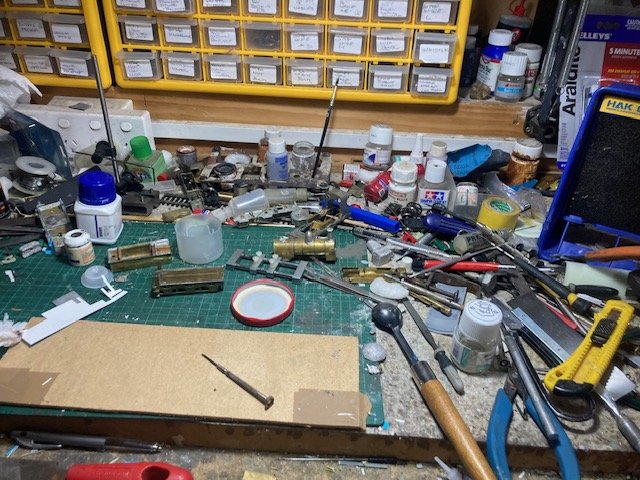
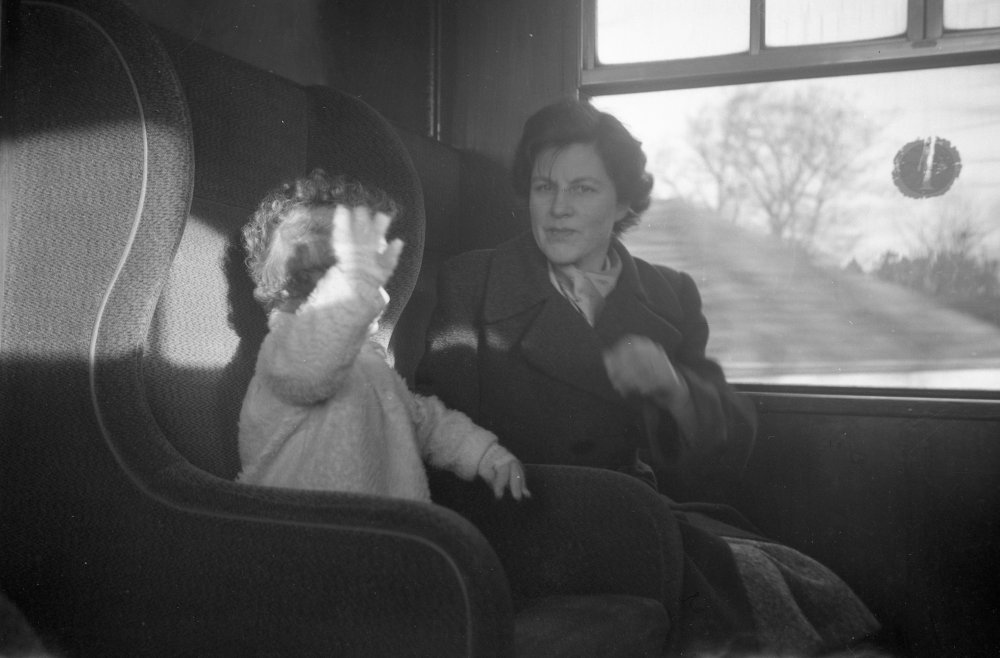
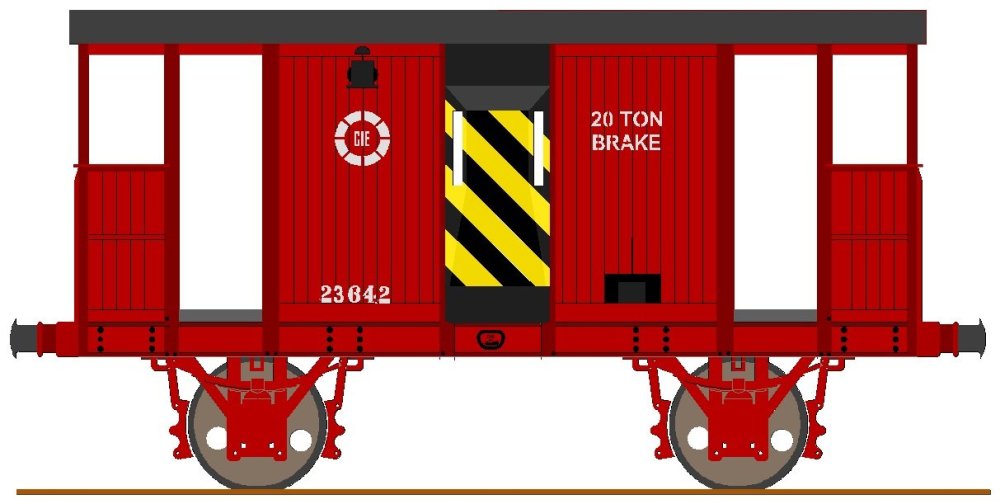
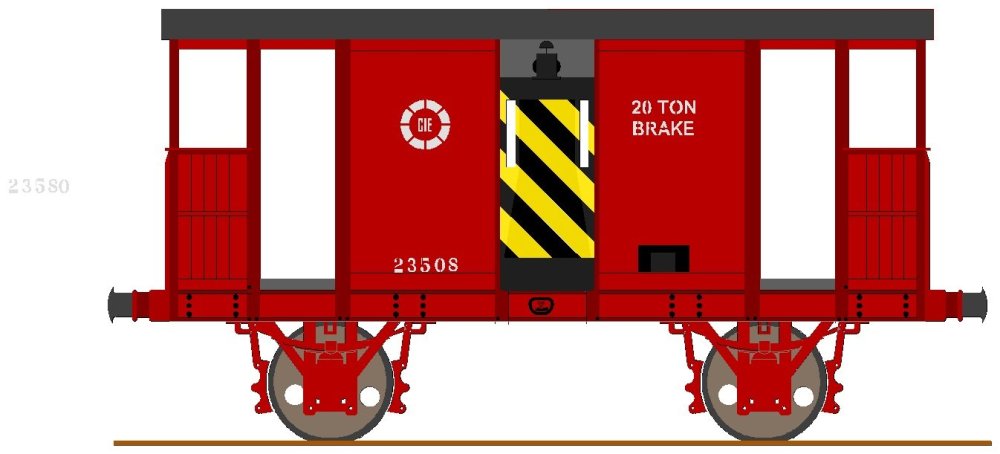
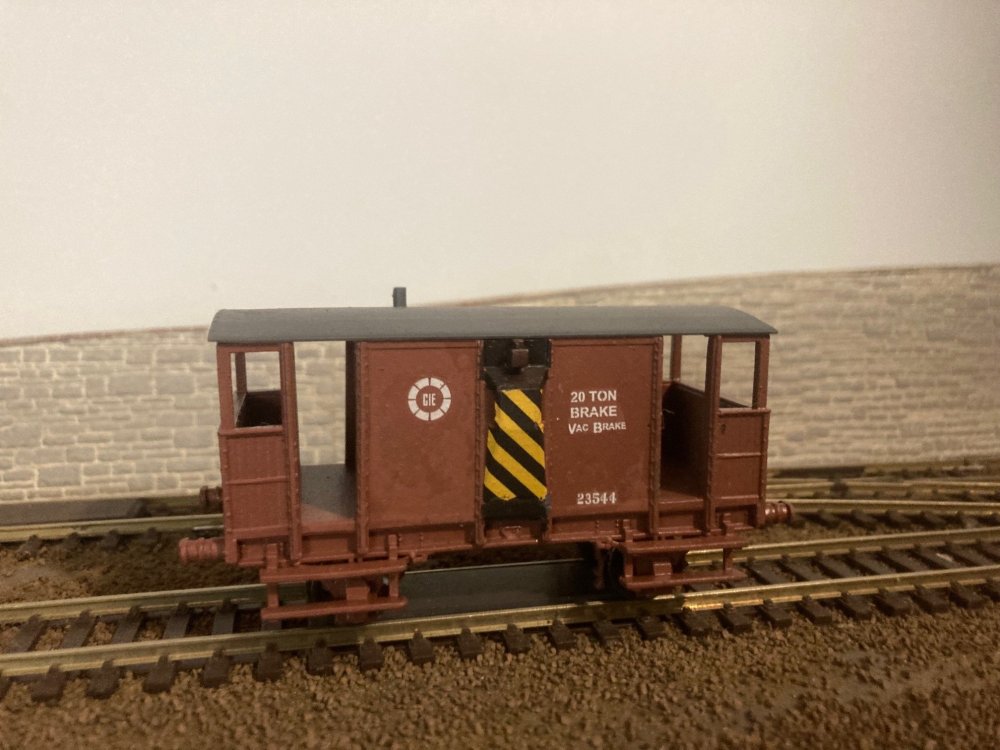
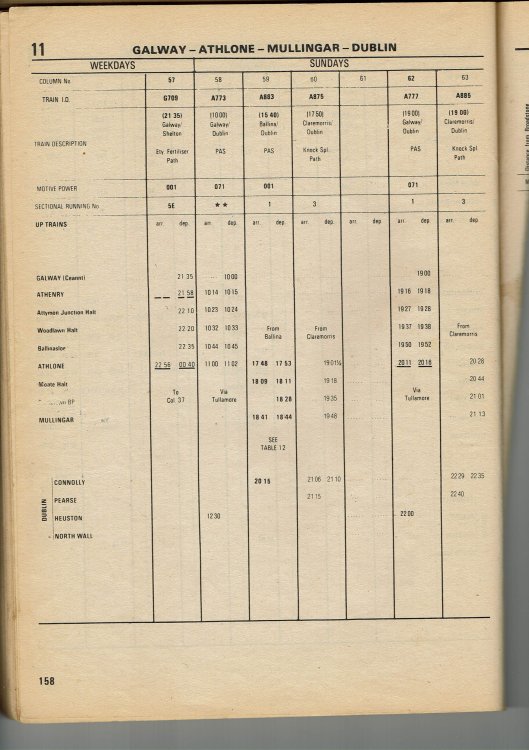
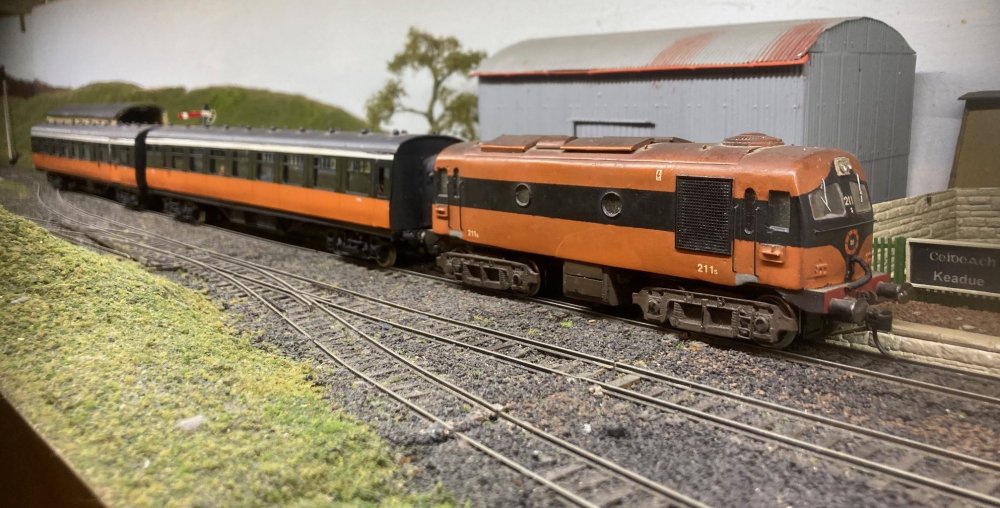
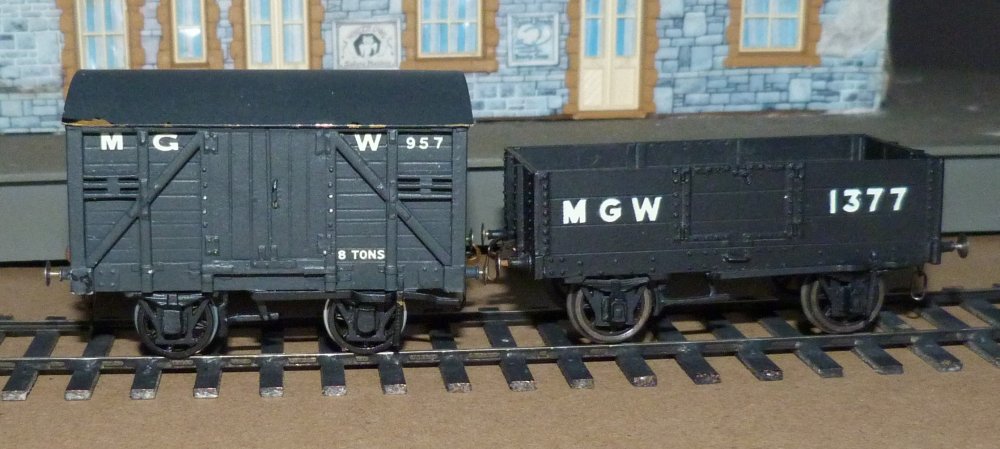
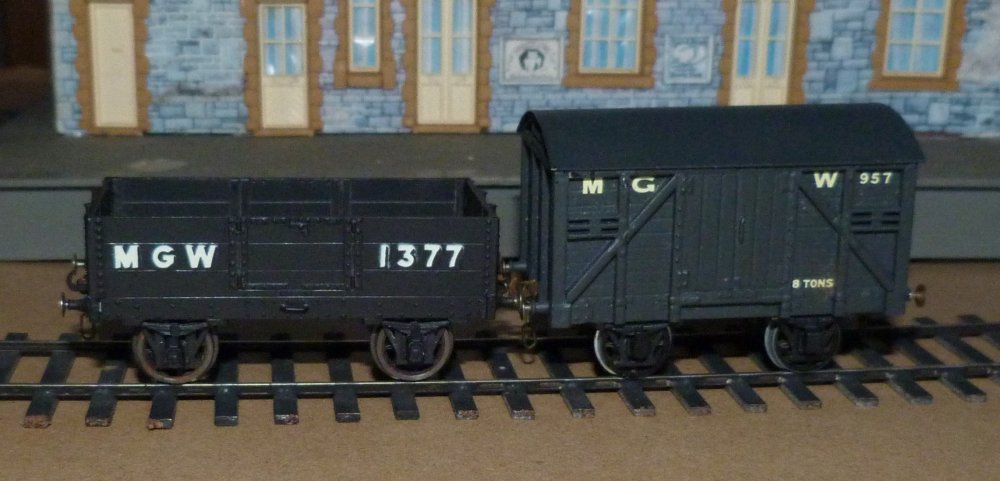






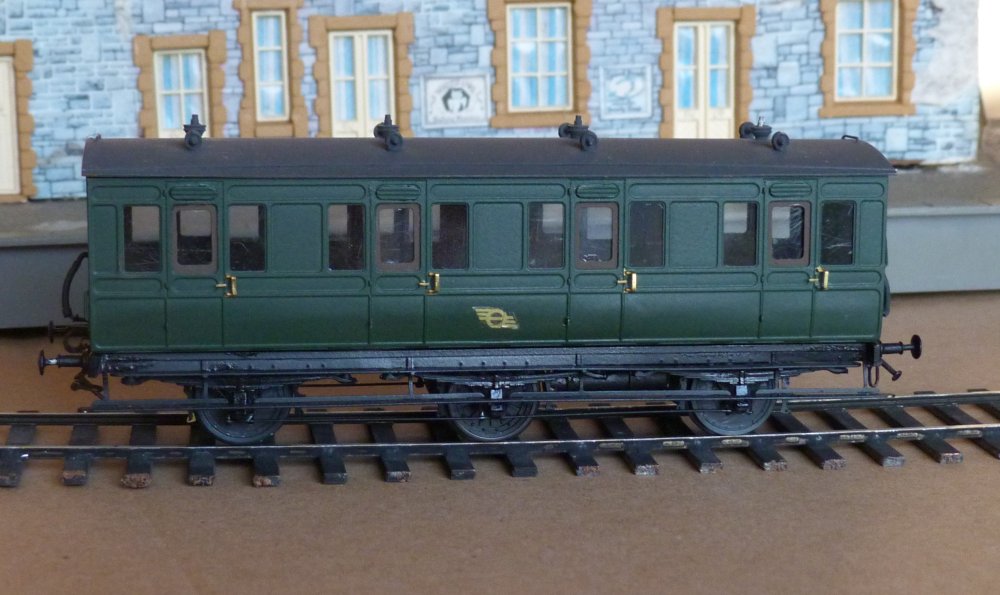
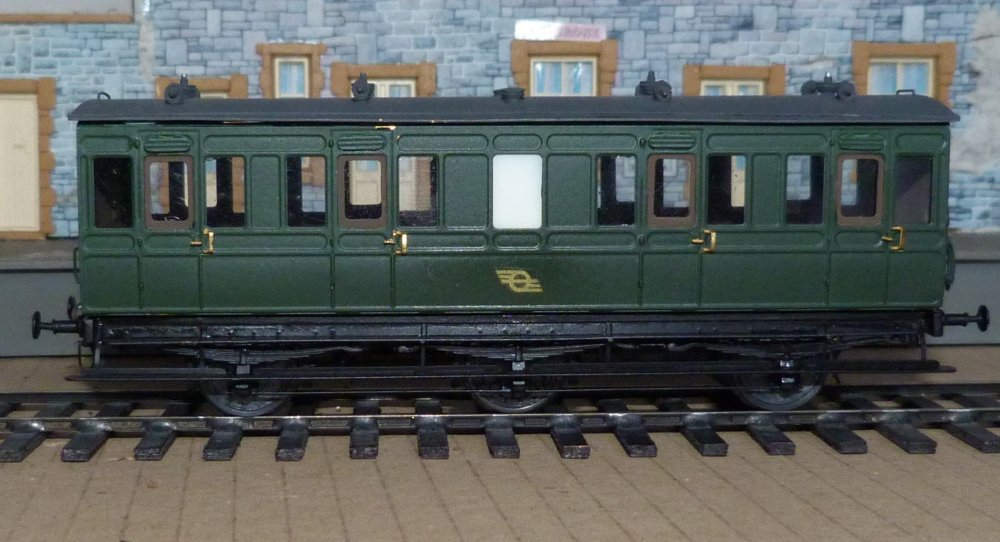

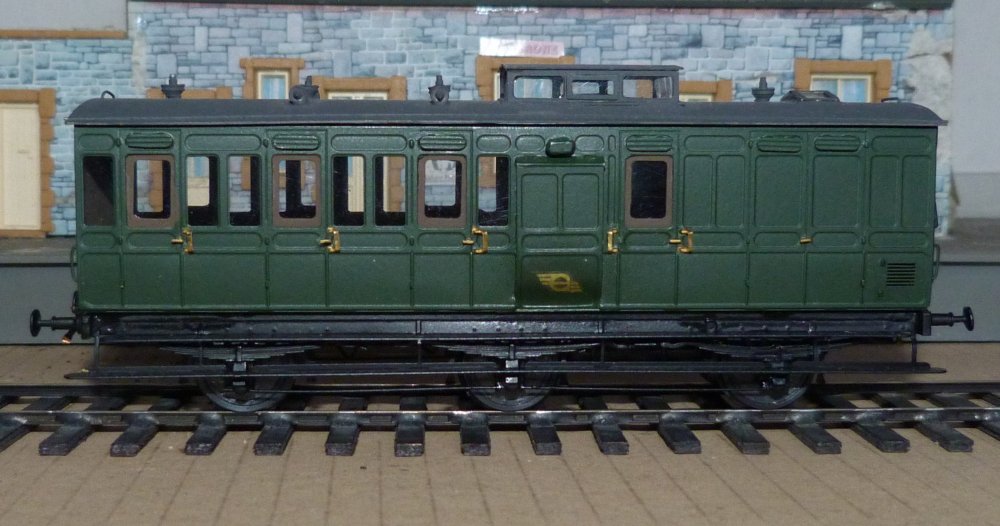
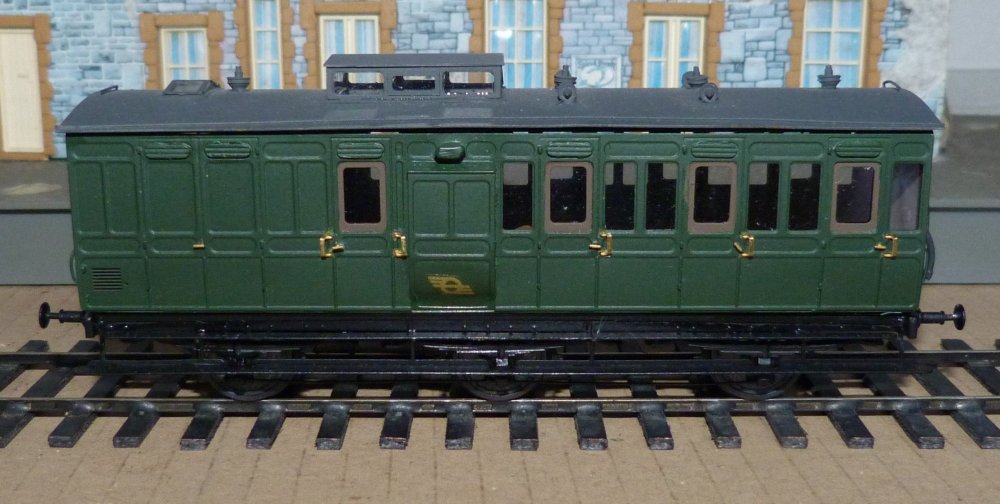
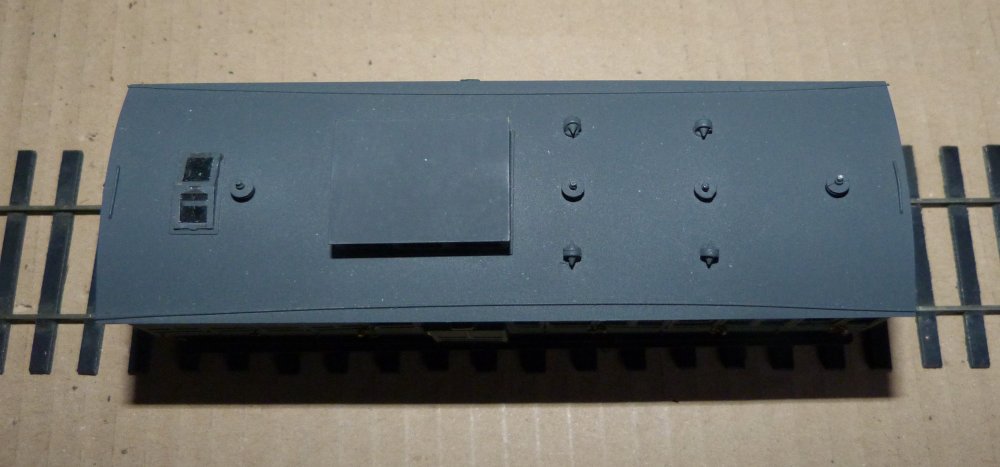

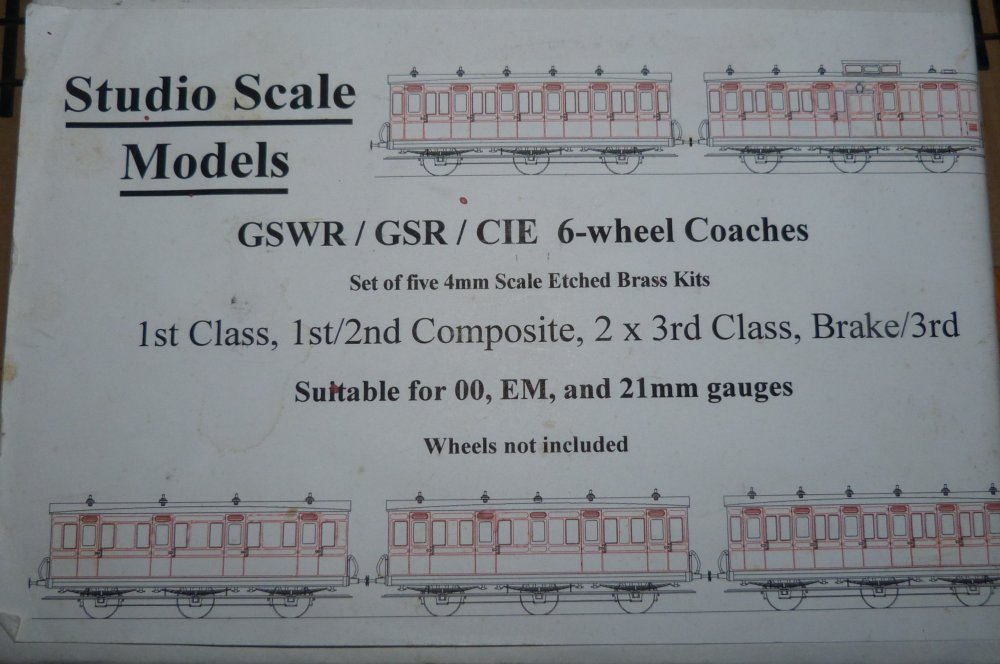





















Capecastle Revival?
in Irish Models
Posted
I would be tempted to try 5½mm-Ft Scale used by Sam Carse on his County Donegal system which gives a more accurate representation of the Irish 3' gauge than On16.5 and less of an underscale appearance with loco chassis.
The main objection to a non-standard scale is that commercial figures and road vehicles are not available, but locos, stock and buidings/structures have to be scratchbuilt anyway.